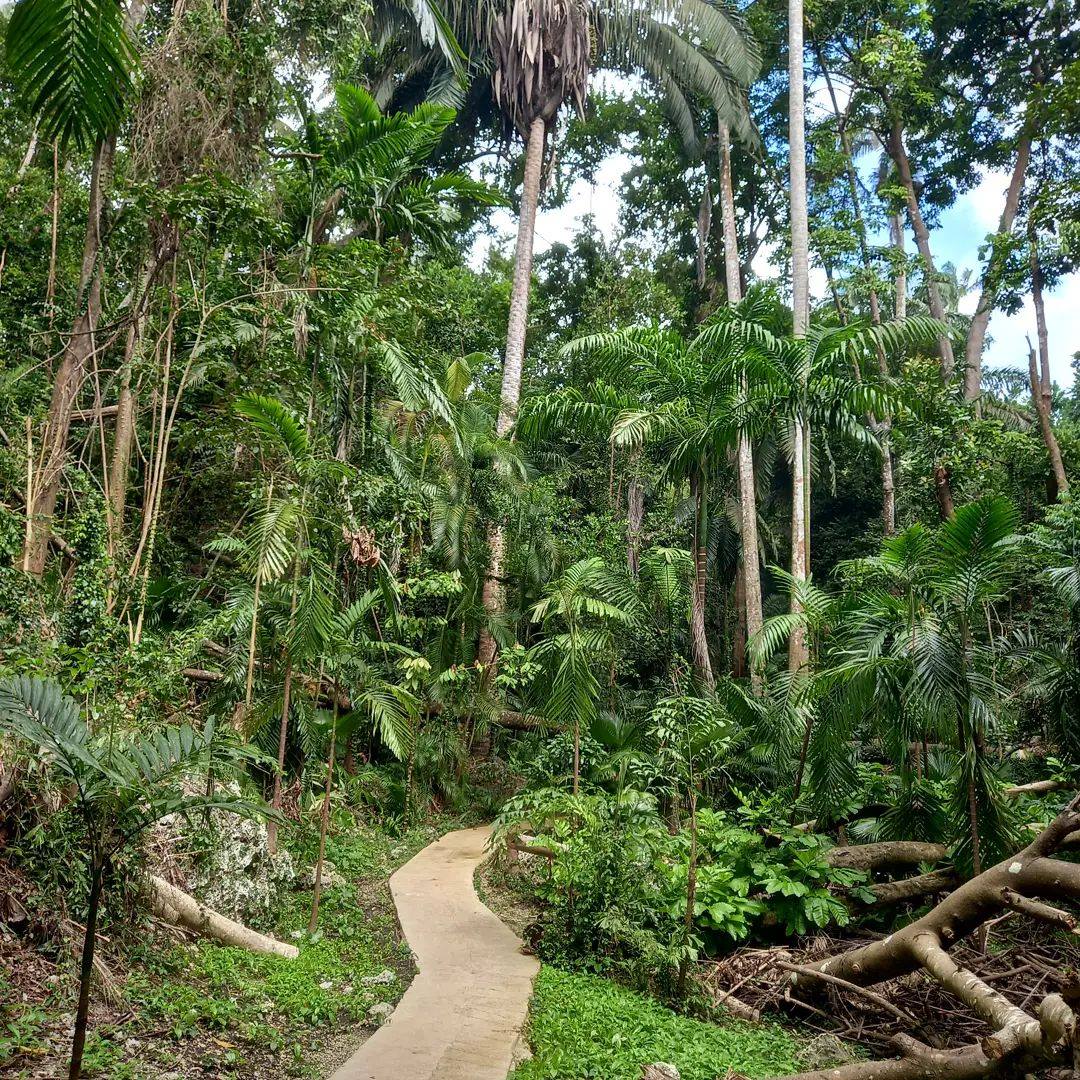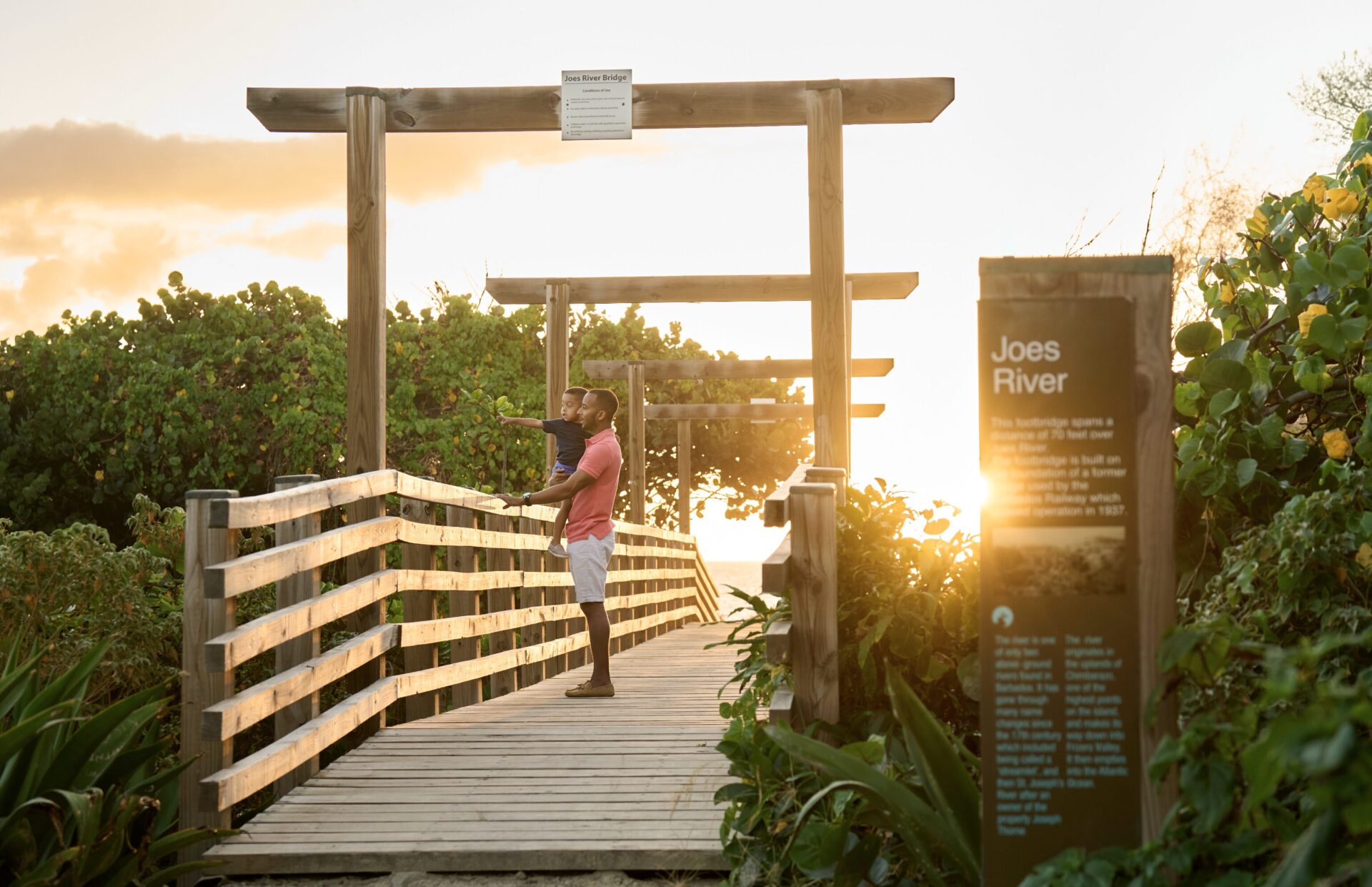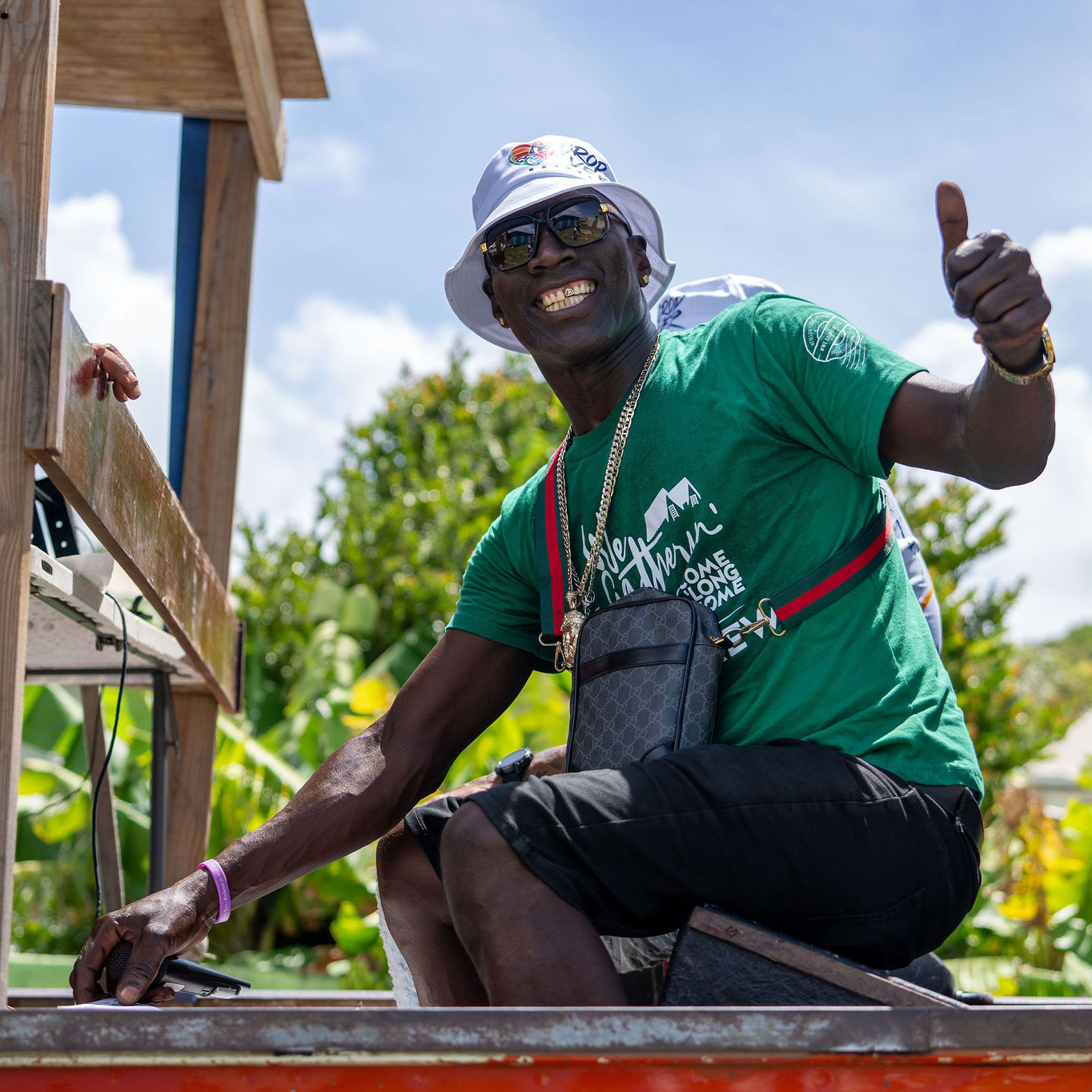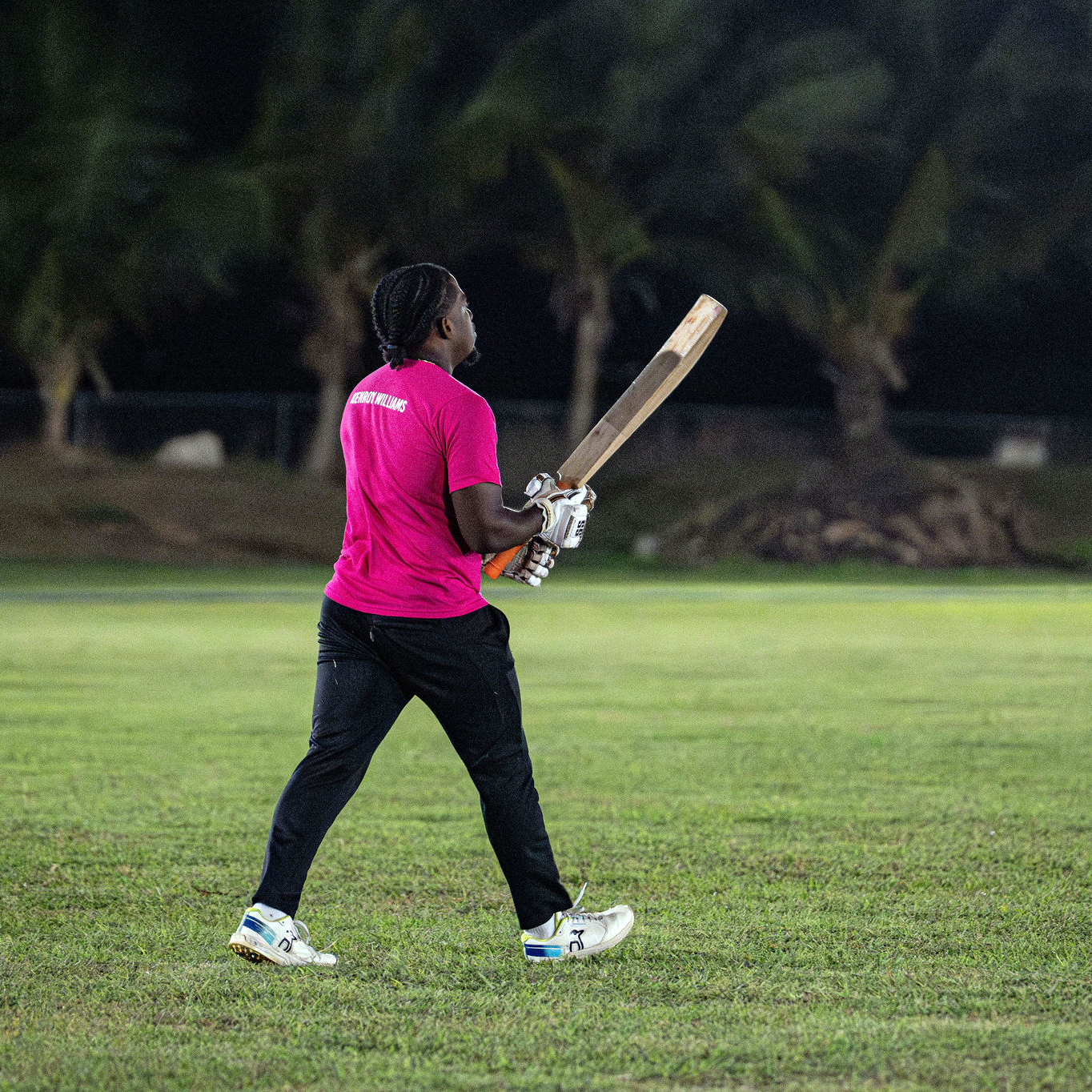
The greenest parish of Barbados is also the smallest in land area. St. Joseph is part of the Scotland District and was formed as an administrative unit, out of the established parishes of St. Andrew and St. John. It was also one of the last two parishes to be organized by Governor Philip Bell. Its Parish Church, named after the husband of the Blessed Virgin Mary, and in existence in 1640, has suffered more than its fair share of tribulations.
Topography
St. Joseph is located in the most rugged terrain of the island, on the backside of the central Barbados highland ridge which stretches from the St. Andrew Overhills region in the North, and from Mt. Hillaby, to the Hackleton Cliff and St. John Parish Church ridge in the south. The parish celebrates its lofty peaks at Chimborazo and Bissex Hill and straddles the Hackleton Ridge. Beneath these heights are the narrow, eastern lowlands running from Cambridge/Ports, thru Springfield and the Cattlewash, to Bathsheba, one of the island’s early Hotel districts.
Its well-watered, dark fertile soil renders St. Joseph the ‘Garden Parish of Barbados.’ A geological anomaly, however, is the large deposit of silica sands, a constructor’s dream, at the Springfield Plantation.
A turbulent Atlantic shoreline, with a wide expanse of onshore reefs, running from St. Andrew to St. John, sealed the parish from enemy incursion but also limited avenues for coastal fishing. Only Tent Bay provided a narrow channel for fishing boats to moor, and they had to be hauled out of the water at every sign of impending bad weather. What this feature has done is preserve the marine life like nowhere else in Barbados. Coral formations, unknown anywhere else in Barbados’ waters, exist off its coastline and are outstanding and breathtaking for the intrepid to discover.
Bathsheba is one of the earliest Hotel Districts in Barbados. Even before the train line arrived in 1885 the area was well known as a ‘place of wellness and salubrious climate.’ With the arrival of the train, it blossomed into a vacation spot for affluent Barbadians; a sanatarium acclaimed and extolled by visitors; and an exciting and pleasurable picnic spot for any Barbadians who could afford to spend a day at the east coast, via the daily train service from Bridgetown to Belleplaine. Its early hotels included Fleetwood and Atlantis, more recently owned by the Maxwell family, Powell Spring, Tenby, Edgewater and Kingston Club on the Cattlewash.
The unfortunate Parish Chapels
St. Joseph’s parish will soon celebrate the fourth location of its Parish Church since various natural disasters have caused severe dislocation to the faithful. The original chapel was built, around 1640, at Joseph’s River, just west of the foot bridge at Gagg’s Hill. Only the mortuary chapel and some gravestones, Including Lieutenant Shene’s, remain on this site which was abandoned after the Church suffered hurricane damage and destruction in 1780 and 1831. It was the last chapel to be rebuilt in 1839 but had to be closed in 2011 owing to severe cracks caused by earth tremors in unstable soil.
A new chapel, called Little St. Joseph, was completed on the Hill Crest Amerindian site (later Beachmont Hotel) in 1837 and also served as a Chapel School with vicarage but in 1884, a miscalculation in the amount of dynamite to clear a passage for the railway line resulted in the demolition of part of the hill and most of the Chapel. The new parish church on Vaughan’s Land, Horse Hill, was completed in 1839 but this was badly cracked by recent landslips and by the passing of Hurricane Tomas in 2010. It was deconsecrated in 2012 and a new site is to be confirmed for its replacement. The Chapel of St. Aidan’s, consecrated ca 1905, sits exactly next to the Train Line near the Bathsheba Railway Station. This replacement for Little St. Joseph, and built as a chapel of ease, is currently hosting the Parish Church services.
Hillswick Chapel
Hillswick is the steep hillside village on the road which leads directly from Horse Hill, through Round Rock, to Bathsheba. In the middle of Hillswick is a small, enclosed roadside burial ground which is dedicated to the memory of George Francis Nicholls. The immaculately maintained cemetery, with its Mortuary Chapel, is owned by the St. Elizabeth Village Gospel Hall of 1899, the earliest Gospel Hall Assembly of the Open Brethren Movement in Barbados.
Beautiful Gardens
As if to show off the greenery of the parish, two exotic gardens – apart from the Richmond Flower Forest which borders on St. Thomas – celebrate the high rainfall experienced in the elevations of the parish. In 1954, scientist, Iris Bayley (later Bannochie) started Andromeda Gardens on her family’s 1740 property. In time she created eight acres of absolute beauty, mere yards above Tent Bay and later opened Barbados’ first acclaimed private gardens which she bequeathed to the National Trust.
Much later, horticulturist Anthony Hunte carved a miracle at the old Castle Grant Sugar factory yard where he planted 2 acres of the adjoining gully in the most exquisite floral wonders imaginable. Located close to Chimborazo, Hunte’s Gardens (with attached nursery) are steeped in a mystique not experienced at other gardens.
Exotic Place Names
Where else in Barbados can one find the ‘Devil’s Bowling Alley’? – a steep, narrow sinuous road which ascends from Horse Hill, obliquely opposite the 1839 Parish Church building at Vaughan’s Land. Only the most daring drivers attempt this road. Also known as Cotton Tower Hill, Bowling Alley leads uphill to the 1818 Signal Station – named after the family of Sir Stapleton Cotton (Lord Combermere) – receiving and transmitting relayed signals between Grenade Hall and Gun Hill. And where else will one find the Coffee Gully, a small district located next to Blackman’s Plantation House on the road to Castle Grant Plantation. Coffee Gully leads to Blackmans Gully and the 17th Century Stone Bridge, then there is McCulloch’s Bridge – all in St. Joseph, and all worth exploring by foot or by jeep.
Natural Water Babies
St Joseph is known for its crashing waves and boisterous seas, but its young men and women are well known for their prowess in the water. The Soup Bowl is Bathsheba’s best-known modern feature. The pounding surf and the long, rolling swells create one of the Caribbean’s most famous venues for surfers from all over the world. From the 1970’s, locals including Mark Holder (the Boss), frequented the seas between Bathsheba Village and the Cattlewash where they perfected their skills. Soon, the wWorld was beating a trail to the Soup Bowl. Bathsheba and Barbados now feature on the calendar of World Surfing Events.
Politics and People
Seventeenth century British politics dictated that many minorities would be sent to Barbados, some under indenture. Some relocated to eastern parishes after serving time or at Emancipation when all were left to fend for themselves. Bathsheba and its smaller surrounding hillside villages are populated by families whose names date back to the 17th century. Family names such as Adamson, Downes, Hinckson, Hobbes, Holdipp, Holder and Mayers, are still prominent in the district. Registers of Wills, Deeds and Marriages, predating 1700, also reveal landed gentry such as Henry Gallop (Gollop), Thomas Jordan, William Ceeley (Sealy), Alexander Barclay and family names such as Bradshaw, Cleaver, Dakers, Morris, Thorne, Turville, Walker and Williams, some of whom are known to this day, either as roads, districts or simply as the names of families still residing in the parish.
A peculiarity of the parish is that, because of its difficult terrain, many plantations were divided, then so subdivided that people of colour and the middle class were able to buy lots large enough for these new owners to qualify for the vote long before adult suffrage was legislated in 1950. St. Joseph therefore became one of the earliest of the parishes to have had a diverse enough base to propel people of colour into Parliament and keep them there until the island attained its Political Independence from Britain.
On the Dangerous Side
The same topography that provides the great beauty of St. Joseph – the hills and valleys – the difficult, sinuous terrain, makes the roads of the parish the most notorious in the island. The steep Horse Hill has always been a challenge, sometimes forcing motorists, in the early days, to reverse or be pushed uphill when leaving the parish. In 1940 there was an incident when an excursion bus was grounded into a wall, causing serious injury to a few passengers.
Since then the Hill has been widened and made less steep, but on 29th July 2007 a tour bus taking passengers to the Crop Over celebrations on the East Coast, lost its brakes and only the bravery and skill of the driver prevented more than the seven fatalities as he crashed the bus into the Joes River Plantation wall to prevent it plunging hundreds of feet further downhill. The driver was hailed as a hero, but he and five of his 40 passengers perished on the spot.
Organization of Jurisdictions.
When jurisdictional districts were established, the eastern parish of St Joseph was announced as the seat of “District F”, the final placement. It was first located at the Police and Judicial Compound at Bissex Hill, in those days a difficult place to reach except by horseback, but a place with stunning views of the coasts and surrounding nether lands. ‘Strict “F” was later relocated to the top of Horse Hill whose premises were recently abandoned in favour of the newly constructed nearby Tamarind Hall, named for Barbadian American jurist, Eric Holder.
Music Masters
There are exotic names of villages that draw one’s instant attention: Spa Hill, the Ridgeback, Fruitful Hill and Frizers, but nothing compares to the personalities who have contributed to the modern St. Joseph, chief among whom is Oliver Walcott, former head of St. Joseph Boys’ School and whose Tuskeegee like programme produced musicians so numerous we can mention only some: Directors of Music in National Bands, Prince Cave, Gordon Lovell of Barbados; Golbourne Small, Guyana; Ken Callender, Jamaica: Gazetted officers Rudolph Holder, Oswald Taitt, Herbie Dowridge, Eustace Webster and Herbie Walker; Private bandleaders Hoppy and Lionel Jordan, and Earl Dawson who plied his trade as far as Russia. Another Director of Music, Dr. Chris Atherley is also a St. Joseph native but was schooled elsewhere.
Other parish headteachers include Eunice Coward, Elden and Colin Deane. Music teachers Elberdine Griffith, Joe Thomas and Edward Powlett each played an instrument and assisted Mr Walcott with the St. Joseph’s boys. These and many other tutors and mentors produced outstanding citizens like Combermere’s opening batsman of the 1950’s who later became Croydon’s Rt. Rev’d, His Lordship Sir Wilfred Wood, first Black Bishop in the Anglican UK Church; Very Rev’d Dean Frank Marshall, Rev’d Bindley Brathwaite, Brigadier Rudyard Lewis and siblings, pharmacist and cricketer Ashton Blackman,
Prominent citizens
Local baker, grocer, trucker, ‘Olive Branch’ Friendly Society organizer and parliamentary representative, Lloyd Smith; owner of the Boston Bus Co., vestryman Wilfred Coward; parish doctor W H E Johnson; R A Lee and others head the list of business and community leaders who remember Rt. Ex. Sir Grantley Adams as leader of Barbados’ social and political revolution after 1937 and who represented this tiny rural parish in Parliament as Barbados’ first Premier, only deferring in 1958 to become Prime Minister of the ill-fated West Indies Federation.
It is likely that he, and Lloyd Smith would have been supported by citizens who later became the cream of St. Joseph’s crop, the centenarians whom we hold in the greatest esteem as having toiled through the ages as the living bedrock of this parish, and reaped their reward and the blessing of long and satisfying life. Count among them Marie Trotman, Millicent Walker-Cave, Gordon Lloyd, Millicent Yearwood, Ethel Hoyte, Olga Boyce, Edith Wilkinson, Adina Clarke, Osbourne Downes, Dorothy Downes, Ada Gale, Esmay Holder, Millicent Trotman, Eunice Coward and Alonza Coward.
The winds howled, the tides raged,
the surf pounded and the rains poured,
but these, the brave and hardy,
held the tiller, stayed the course and reached the sands.
They brought the ship, with all its prize
to lay it in our hands.





